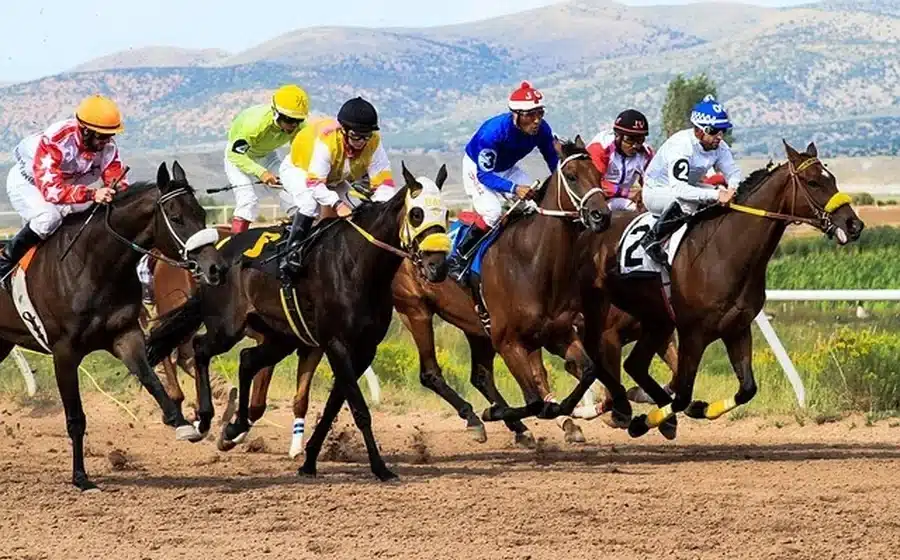Horse racing still pulls in a busy mix of bettors, from track loyalists to people scrolling between errands. With racecards and live prices just a tap away, it slips into daily routines more than it used to. As for the numbers: fractional quotes like 10-1 or 7-2 set the shape of a potential payout, and they shift as money trickles in. Interest in jockey angles appears to be climbing, too, with more folks digging into rider-horse pairings to feel a little surer about a pick.
Or at least suggests, that over 70% of online tickets now lean on past results. That data tilt probably explains part of the stickiness. Blend old track craft with slick casino interfaces and you get a scene that feels easier to enter yet somehow more competitive, even a bit unforgiving on a bad day.
How horse racing odds shape online betting
Odds are the map to any return; without them, nothing really adds up. In the UK, fractional formats still carry the day. A 10-1 quote means a $10 stake could return $100 in profit, plus the ten back, if the horse actually gets home. Odds-on lines such as 1-5 flag a popular choice: risk five to win one. Because most payouts draw from pools, prices wobble as bets land, often tightening around hot selections.
Decimal formats are common across Europe and, for some, feel clearer because they display total return. Decimal odds, common on European sites and increasingly replicated by online casino wagering tools, multiply the stake for a clear view of total return. AmWager has noted a noticeable online shift: prices can update in seconds. Those jumps can catch people flat-footed, but quick reactions sometimes lock in value before it disappears.
Developing effective betting strategies in digital casino horse racing
Strategy has changed with the apps, or at least it looks that way from the outside. Dutching is one example: back a few plausible winners in the same race so one success can soften the misses. The Yankee asks more of you—four races and a cluster of singles, doubles, and trebles—yet it can build quietly if your read is decent. Risk management matters, perhaps more than the system you pick. Some bettors tilt toward proportional staking: something like 80% on the favorite, a sliver on an outsider, aiming to keep the lights on while leaving room for a punchy payout.
Form study is no longer optional. People scan recent runs, trainer stats track quirks even weather. A jockey’s sharpness, rapport with the barn, and, yes, fitness might push a borderline selection onto the ticket. The Sports Geek has mentioned that roughly 60% of high-frequency players check multiple sources—three or more—before they press confirm. It sounds about right, and also like work.
Jockey analysis for improved outcomes
Plenty of success seems to start with the rider-horse relationship. Seasoned bettors often flag pairings that have already hit the frame a few times in similar conditions. Patterns do emerge, slowly at first and then suddenly obvious. When you poke at the numbers, you tend to find the usual suspects: win rate, track record, distance comfort, and how the jockey handles messy weather.
Online tools surface a lot of this, so comparisons take minutes instead of hours. AcePerHead notes that about 30% of major-race winners are ridden by jockeys who already logged a win with the same horse in the previous six months. That figure won’t pick the winner for you, but it nudges the short list. Filtering by recent jockey-trainer partnerships tightens things further. Not every data point deserves equal weight, and sometimes a quiet pattern beats a loud stat.
Navigating the online casino horse racing ecosystem
The interfaces speed everything up. Odds screens and comparison tools make decisions feel urgent, sometimes a little rushed. Simulated Dutching and auto-bet systems have their moment, especially for people testing ideas without committing the full roll. Watching the market helps. Fast price swings can hint at late whispers about a horse’s condition or a rider switch, though it is easy to read too much into noise.
Bankroll rules keep the wheels on. Set limits, track wagers, pause when the log starts to blur. The saved history is useful for review, but lots of tiny bets can hide a big total if you stop paying attention. The folks who last tend to blend old-school reading with fast data, adjusting rather than guessing, and accepting that some days just do not cooperate. Explore similar strategies in other Games to diversify your approach.
Responsible gambling is essential
Keep it fun and contained. Set personal limits before you start, use the platform’s tracking tools, and be willing to sit out a race if your pulse is running the show. Live races and flickering odds can feel intoxicating, which is a reason to slow down, not speed up. When it stops feeling like a game or you catch yourself chasing, try the self-exclusion tools most sites provide. Protecting your roll tends to protect your mood, too, and that is really the point: enjoy the races without letting them run you.



